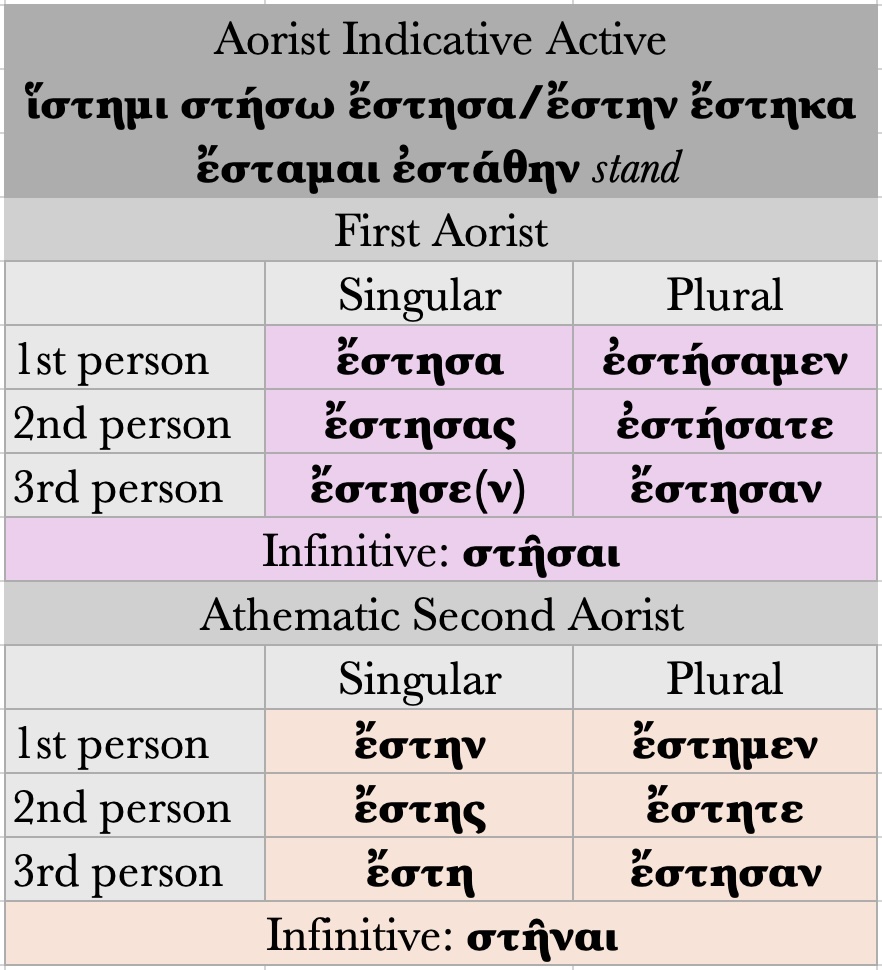29.6 Note the THIRD PRINCIPAL PART of another common Greek –μι verb: ἵστημι, στήσω, ἔστησα/ἔστην (stem: στη/στα-). This verb has both a FIRST and ATHEMATIC SECOND AORIST form! Note also that, unlike the previous three verbs, this verb keeps its long stem vowel (στη-) throughout the singular and plural for both aorist forms.
29.8 Verbs with First and Second Aorist Forms
Most verbs are formed only in the FIRST or SECOND AORIST. If, however, a verb has BOTH a first and second aorist form, it is often the case that the FIRST AORIST is TRANSITIVE, and the SECOND AORIST is INTRANSITIVE. For example:
- ἵστημι, στήσω, ἔστησα/ἔστην stand
- ἔστησα I stood (something) up.
- ἔστην I stood up.
- φύω, φύσω, ἔφυσα/ἔφυν produce, grow
- ἔφυσα I grew (something).
- ἔφυν I grew.
Charts JPG


